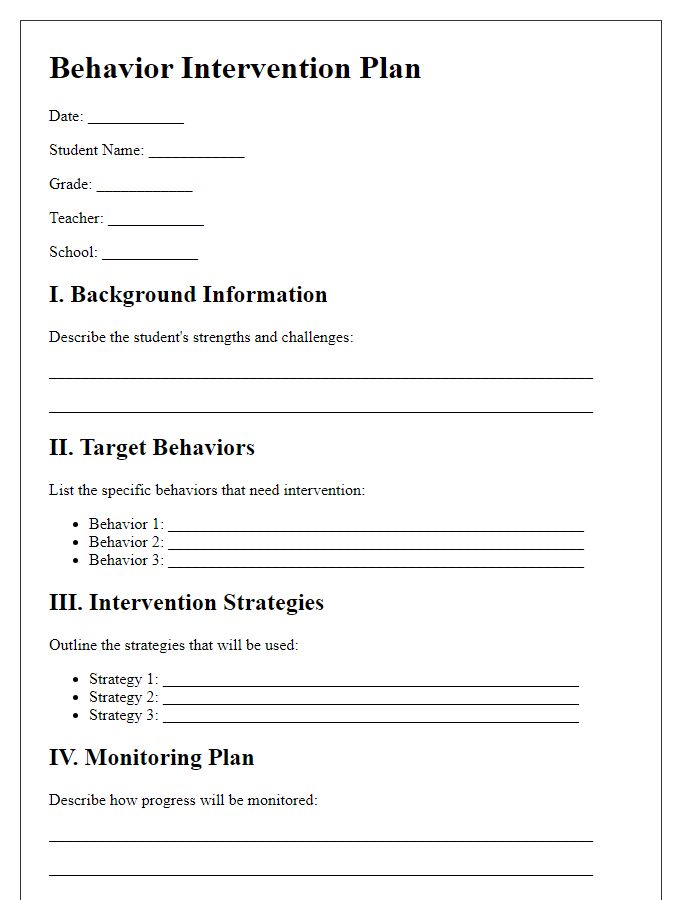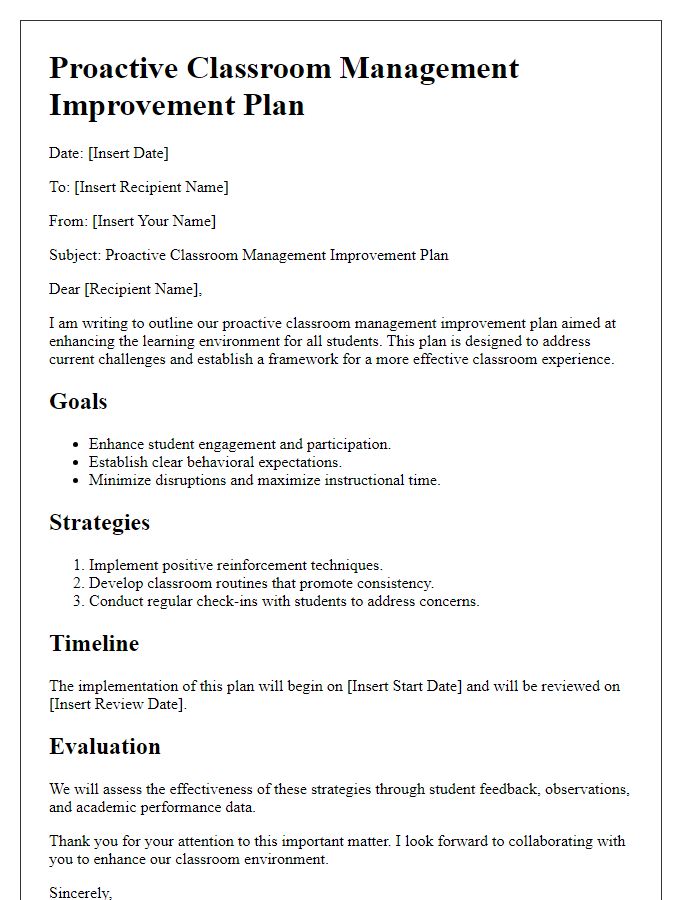Are you looking to foster a positive environment for your students? Implementing a classroom behavior improvement plan can make a significant difference in maintaining a conducive learning atmosphere. In this article, we'll explore effective strategies and actionable steps to help teachers guide their students toward better behavior. Join us as we delve into practical tips that can transform your classroom dynamics for the better!

Clear Objectives and Goals
A classroom behavior improvement plan is a structured strategy aimed at enhancing student conduct to create a more conducive learning environment. Specific objectives can include fostering respect among peers, promoting active participation in class discussions, and reducing disruptive behaviors. Recognizing key behavior metrics, such as the frequency of class disruptions per week, can help track progress. Goals may focus on achieving a 50% reduction in incidents by the end of the semester, as recorded through teacher observations and behavior logs. Engaging students in self-reflection activities, such as weekly journals, can aid in developing personal accountability. Additionally, incorporating positive reinforcement strategies, like awarding "kindness points" for exemplary behavior, can motivate students. Overall, the plan emphasizes a collaborative approach involving teachers, parents, and students to ensure accountability and sustained improvement in classroom behavior.
Specific Behavioral Expectations
Creating a plan for improving classroom behavior involves establishing clear expectations for students. Expectations include maintaining respect towards peers and teachers, engaging actively in classroom discussions, and completing assignments on time. Consistent behaviors such as raising hands before speaking, staying seated during lessons, and using appropriate language contribute to a positive learning environment. Reinforcement strategies may involve verbal praise and rewards for meeting these expectations. Monitoring tools such as charts or individual behavior logs can track student progress, facilitating constructive feedback during one-on-one discussions. Classroom rules should be revisited regularly to ensure understanding and commitment, creating a foundation for a respectful and productive educational setting.
Positive Reinforcement Strategies
Positive reinforcement strategies significantly enhance classroom behavior by fostering a conducive learning environment. Implementing techniques such as praise, rewards, and behavior charts can effectively motivate students and encourage acceptable conduct. For instance, utilizing a color-coded behavior chart allows students to visualize their progress, promoting accountability. Recognizing achievements with small incentives, like stickers or extra recess time, can further drive positive behavior. Creating a classroom culture that celebrates effort and improvement cultivates resilience in students, guiding them toward appropriate actions during challenging situations. Engaging parents and setting clear expectations can solidify these strategies, ensuring consistency between home and school environments.
Consistent Monitoring and Feedback
Addressing classroom behavior improvement plans requires a structured approach. Teachers must provide consistent monitoring and feedback to students exhibiting behavioral challenges. Regular check-ins (weekly or bi-weekly) can help track progress, while specific feedback on behaviors (such as participation or respect towards peers) offers clarity on expectations. Utilizing tools like behavior charts (visual aids indicating behavior goals) and journals (where students reflect on their actions) enhances accountability. Positive reinforcement (praise or small rewards) for improvements fosters motivation. Collaboration with parents (involving them in discussions about behavior) strengthens support systems. Establishing clear goals (target behaviors to achieve by the end of the month) can provide measurable outcomes for success.
Collaborative Parent-Teacher Involvement
Collaboration between parents and teachers is essential for implementing effective behavior improvement plans in classrooms. Engaging parents in discussions about their child's behavior can foster an understanding of the goals and strategies in place. Schools can facilitate regular meetings, such as conferences or workshops, that highlight behavioral expectations and provide resources for interventions at home. Teachers can maintain open communication through daily logs or digital platforms, allowing parents to monitor progress and address any concerns promptly. Encouraging involvement through volunteering opportunities within the classroom can foster a supportive community, enabling a shared responsibility for behavior improvement. Additionally, providing training sessions on behavioral strategies can empower parents, ensuring consistency between home and school environments.
Letter Template For Classroom Behavior Improvement Plan Samples
Letter template of behavior correction strategy for educational settings.













Comments